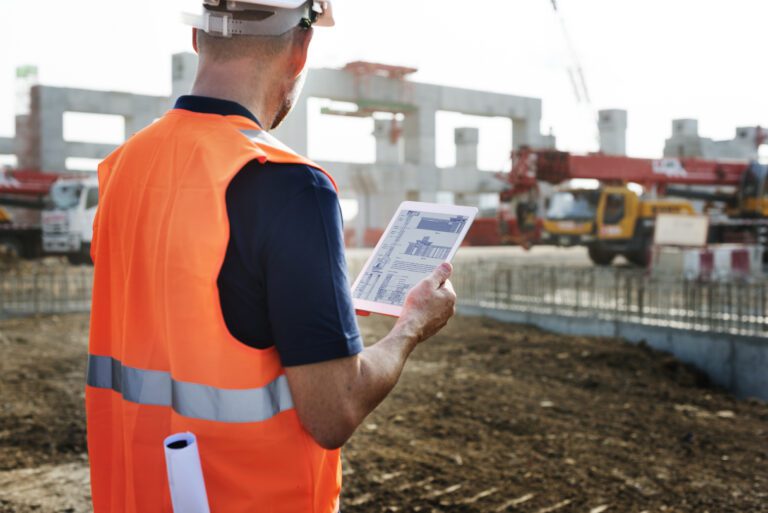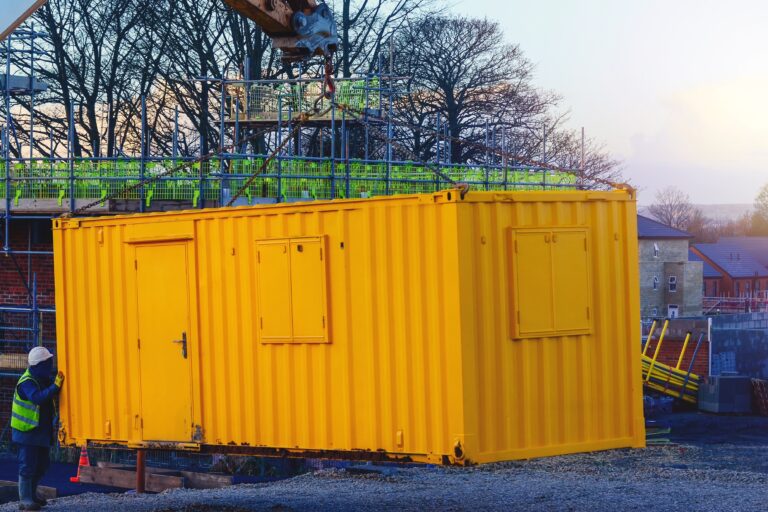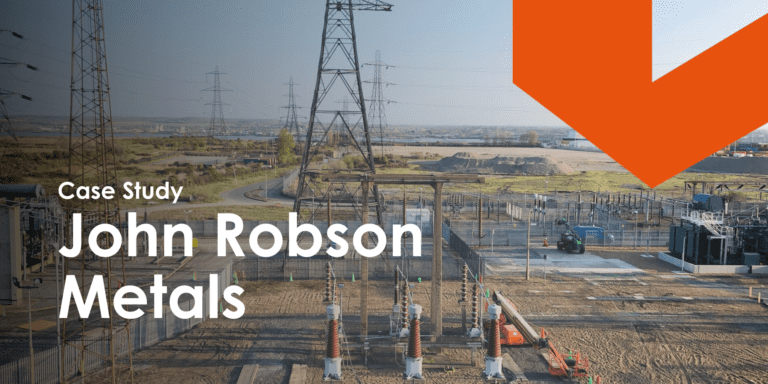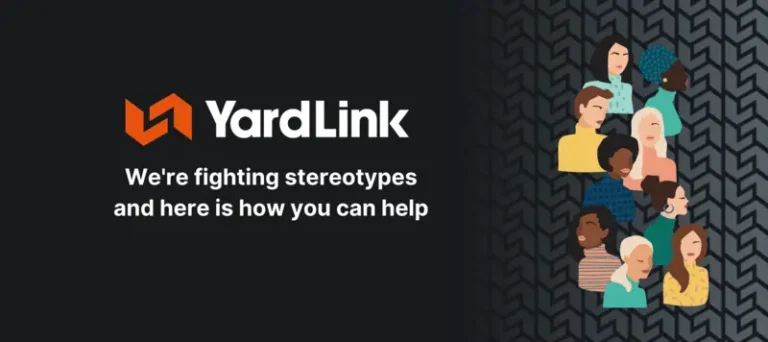22nd February, 2022
Different Types of Bridges: Examples from Around the World
There are different types of bridges everywhere, each with their own unique structure and design. We explore different types of bridge from all over the world.
From the Golden Gate Bridge in San Francisco, to the Rialto Bridge in Venice, there are different types of bridges everywhere, you probably cross some of them on your way to work everyday.
Beam bridges, truss bridges, suspension bridges and everything in between, they all serve an essential function: to get us places. Every bridge will follow a similar set of instructions, sure, but every bridge is different in one way or another. Some are even championed as pieces of art.
Long gone are the days of relying on fallen logs or other long objects to cross specific areas. The bridge designs of the modern day are far more complex in comparison, balancing superstructures (i.e. trusses) and substructures (i.e. pillars) in one sturdy build.
Easily one of the best ways of understanding bridge types is by looking at real world examples. Examples that you’ll find spread throughout this post below. And yes, we’ll be talking about the world’s longest bridges too!
Different Types of Bridges Explained
Not every bridge was designed and constructed equal. After all, not every bridge was made to hold the weight of multiple vehicles, nor does it need to, depending on where this bridge is located.
When looking at the different types of bridges it’s important to recognise the 7 unique designs that shape what we see out in the open, these include:
- Arch bridge
- Truss bridge
- Beam bridge
- Cable-Stayed bridge
- Tied-Arch bridge
- Suspension bridge
- Cantilever bridge
There are bridges for everything, be it people, cars/vans, trains, etc. It’s partly what makes learning about them so interesting. Now, let’s begin breaking down the different types of bridges, starting with the very oval-like arch bridge.

Arch Bridge
If you live in a rural area, then the likelihood of you coming across, and crossing, an arch bridge is quite high. It’s actually one of the oldest bridge designs there is, with some of the earliest arch bridges dating back more than 3,000 years, if you can believe that!
The shape of an arch bridge is very distinct, featuring a very distinct curve that starts flat before moving up and then back down.
Gravity plays a significant part in the science behind arch bridges. Removing one particular piece of the structure could cause it to crumble, a piece known as the keystone. You can find the keystone towards the centre. This piece holds an arch bridge in place through a process known as ‘compression.’
Older arch bridges were made using large stones. Those you find in the modern day are made mostly from concrete and various metals.
The Anji Bridge: One of the World’s Oldest Arch Bridges
The Anji Bridge is the world’s oldest open-spandrel segmental arch bridge. It’s a bridge that has stood tall for around 1400 years. You can find this bridge in the southern part of Hebei Province in China.
This bridge is around 50 metres (or 160 ft) long, complete with a central span of 37.37 metres (or 122.6 ft). Height-wise, it stands 7.3 metres tall.
It goes by many names, including the ‘Great Stone Bridge’ and the’ Zhaozhou Bridge,’ which should tell you a lot in terms of how many people stop to visit this piece of history – a history that dates back to 595 CE during its initial construction!
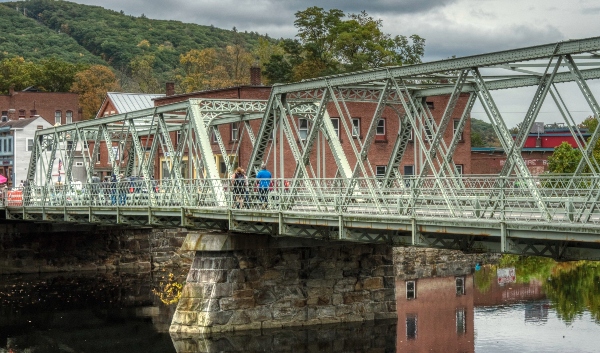
Truss Bridge
Next up is the truss bridge, one of the different types of bridges that were once made completely out of wood before other materials were later implemented.
A truss bridge is unique in that it evenly spreads the load over a series of small sections. The modern versions of this bridge are typically welded together, or grouped using rivet joints that form a sort of triangle-like shape.
Truss bridges are often supported with wooden/steel supports to relieve some of the tension. We should point out that this is but one form of truss design, others include:
- Baltimore truss
- Howe truss
- Long truss
- Vierendeel truss
- Warren truss
Each of the different types of truss bridges highlighted above alter the design ever-so-slightly. The Vierendeel truss, for example, is a lot more circular, or cube-like, in its overall structure.
Ikitsuki Bridge: Japan’s Reliable Truss Bridge
The Ikitsuki Bridge is known as a continuous truss bridge, which should come as no surprise since it runs for 400 metres (or 1,300 feet).
It took 8 years to construct with completion wrapping up in 1991, making it one of the younger bridges we’ll cover.
Japan is home to various different types of bridges, from the Eshima Ohashi Bridge to the Rainbow Bridge, but there’s just something about the Ikitsuki that really stands out.
Perhaps it has something to do with its overall shape? Either way, it’s an incredible structure, and a true representative of truss bridges everywhere.
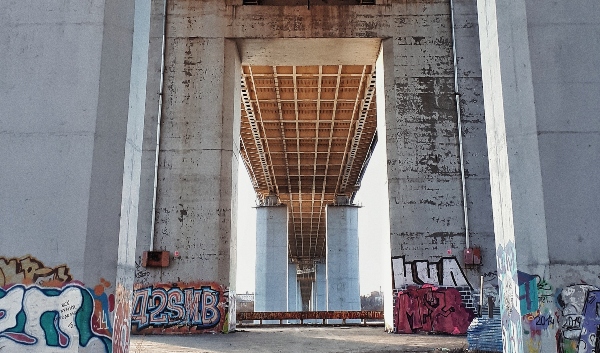
Beam Bridge
One of the cheapest bridges to build, and one of the most common too. We’re of course referring to beam bridges. Its design is a lot easier to understand than others due to the fact that it consists of a crossbeam, and an abutment at either end.
With beam bridges, the force of compression pushes the load inwards, and out toward the abutments located at both ends of the bridge. This type of bridge can run for miles on end, with the longest beam bridge in the world running for 24 miles total!
Beam bridges are the polar opposite of arch bridges in that gravity is often the enemy of this type of bridge. This is due to the amount of space underneath these builds. It’s for this reason that most beam bridges will be supported by multiple stanchions or piers.
Longer beam bridges pose the most difficulty, as the longer you go, the more you’ll need to reinforce through connecting pieces.
Lake Ponchartrain Causeway: The World’s Longest Beam Bridge
Remember when we said that the longest beam bridge in the world runs for 24 miles? Yeah, that accolade belongs to the Lake Ponchartrain Causeway beam bridge located in America – Louisiana, to be specific.
When learning about the different types of bridges, it’s important to know the record holders, which is exactly what this beam bridge is – a bridge that’s supported by 9,500 concrete pilings!
Guinness World Records considers Lake Ponchartrain Causeway the longest continuous bridge over water. However, in 2011 it would face competition from the Jiaozhou Bay Bridge in China.
The two technically share the award, although Guinness World Records would later make a distinction, giving the Louisiana beam bridge the recognition as the longest bridge over continuous water.
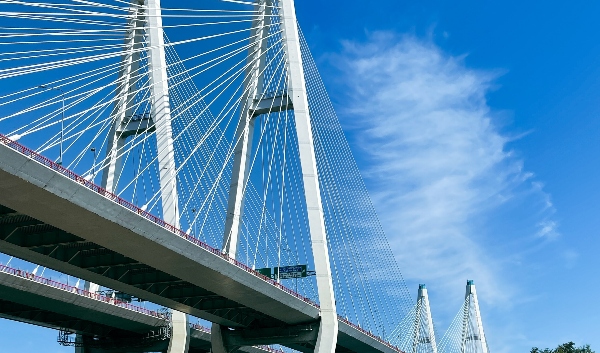
Cable-Stayed Bridge
A cable-stayed bridge is one of those self-explanatory types in that it consists of multiple vertical suspenders that attach to one, or multiple towers. The cables act as additional support to these towers, using tension to hold it all in place.
How many cables are attached to these bridges will depend on the bridge itself, how long it is and other unique factors. Cable-stayed bridges are very similar to suspension bridges (a bridge type we’ll cover in just a moment), they even look strikingly similar from a visual perspective.
Strömsund Bridge: The First Modern Cable-Stayed Bridge
There’s no better example to give of a cable-stayed bridge than the Strömsund Bridge, considered by many to be the first of its kind – an influential structure that would go on to influence countless others.
It was completed back in 1956, and continues to be a notable talking point whenever this bridge type is mentioned. Many will point to the famous Brooklyn Bridge when asked what the most known cable-stayed bridge is, but you can’t discredit the original. Besides, that bridge is more of a suspension/cable-stayed hybrid anyway.
Here’s an interesting fact about this bridge: the Strömsund Bridge is commonly referred to as ‘Jämtland’s Golden Gate,’ a name that has followed it for quite some time.

Tied-Arch Bridge
Tied-arch bridges or bowstring bridges, call it whatever you like. Like beam bridges, tied-arch bridges are very common, more so in parts of Europe. It gets the bowstring name from its overall shape, which does have that very grand sort of style to it.
This bridge is quite similar to an arch bridge in terms of how it works without collapsing, only the arch supports the bridge from above rather than below. The vertical cables seen are there to provide support to that top arch, which again, holds it all together.
Newark Dyke Bridge: Helping Trains Arrive on Time
Trains travel across dozens of bridges on a single journey. In the UK, trains traveling on certain routes will roll across the Newark Dyke Bridge in particular, a fine example of a bowstring bridge.
The Newark Dyke Bridge might not be the most known bridge there is, but what it lacks in notoriety it certainly makes up for in service. It has a 77m arch span, and a deck width of 11.25m.
This bridge isn’t nearly as large as some of the other tied-arch bridges out there. Still, it’s an excellent example of how the different types of bridges we’re talking about are simply a rough outline. How they’re applied in a real setting varies based on the task at hand.

Suspension Bridge
Easily the most recognisable bridge type there is (other than a beam bridge), period. Suspension bridges are those larger than life constructs that combine suspension cables with large pylons and suspenders. All of this keeps this type of bridge upright, and free from any issues relating to the weather.
You see, suspension bridges have a lot to worry about, especially when it comes to wind. The wind can cause resonance and torsion. Not sure what these things mean? No problem, here’s a quick rundown:
- Resonance: Vibrations caused by the wind operating on a frequency that has the capacity to collapse an entire bridge
- Torsion: Another issue caused by the wind, torsion is more of a twisting force that is strong enough to hurl people off of bridges
Every suspension bridge you come across will need to account for these elements, or risk harming you and others around you. Stopping these bridges from swaying left to right is very difficult to work around, as you can imagine, given the size of the Golden Gate Bridge and other standout suspension bridges.
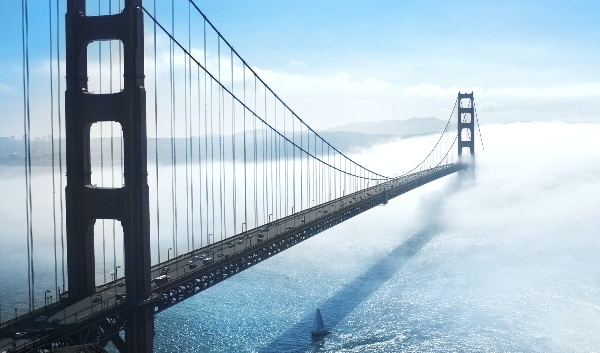
The Golden Gate Bridge: San Francisco’s Top Tourist Spot
There’s different types of bridges and then there’s the Golden Gate Bridge. It’s one of the most popular bridges in the entire world, if not the most popular. Why that is comes down to its unique design, not to mention just how big it is.
The Golden Gate Bridge consists of tin 746-foot orange towers and various suspension cables that sew in and around said towers. It’s one-mile-wide, and it opened in May of 1937 after a four-year construction period.
If you were to ask a stranger to name three bridges off the top of their head, they’ll probably include the Golden Gate Bridge in their response. It’s visited by nearly 10 million people each year, it’s that popular.
Cantilever Bridge
Cantilever bridges look way different to every other bridge type. Bridges like these are typically anchored into the ground through pillars to support a horizontal deck that covers one side of the span to the other.
The load is covered from above and below, making it an ideal bridge for weight-bearing vehicles, specifically those hauling heavy goods. You’ll find that a good majority of cantilever bridges are supported with trusses.
Quebec Bridge: The Longest Cantilever Bridge There Is
Built in 1919, and extending 1,800 feet, the Quebec Bridge in Canada is one of those seeing is believing types of bridges. The Quebec Bridge was constructed multiple times, failing on each of those occasions before eventually opening. It’s owned and operated by the Canadian National Railway.
The Quebec Bridge is a riveted steel truss structure, running 987m long, 29m wide and 104m high. Before it was built, ferry travel was the only way to cross the St. Lawrence River from the south shore.
The unique thing about this bridge is that it was made for road, rail and pedestrians. Although, it has been updated as the years have gone by. For example, it used to have no highway lanes up until 1929.
Other Types of Bridges
The different types of bridges we’ve just covered are what come to mind whenever someone is referring to a bridge. Still, there are others to cover if we’re to be as comprehensive as possible.
The bridges we explore in this section might not be what you’re expecting, but they are bridges in definition. Footbridges, for example, are 100% bridges, just not nearly as imposing as, say, a suspension bridge. Although, some are just as impressive from an aesthetics point of view.
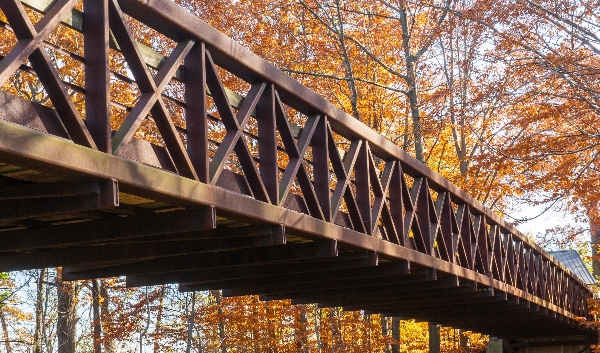
Footbridge
Footbridges tend to be a lot more experimental when it comes to design and construction. Bridges like the Simone de Beauvoir Bridge in Paris, and the Moses Bridge in the Netherlands are perfect examples of this.
We’ll admit, some are pretty impractical when it comes to accessibility, still, there’s no denying that these bridge types are very pleasing to look at.
Footbridges are typically made out of concrete, and metal, although the earliest renditions of these structures were made out of fallen trees, or large rocks that would act as stepping stones to clear streams and obstacles like that.
Boardwalks are part of the footbridges family in that they allow pedestrians to cross large spaces covered by water.
Scaffold Bridge
Bridges can be assembled and reassembled, sometimes to build larger bridges! This is the case for scaffold bridges, or platforms as most would refer to them as. Scaffolding is essential for construction, or anything that requires working from high places.
One of the unique things about a scaffold bridge is that it’s customisable. How long or how tall the bridge is depends entirely on the task at hand.
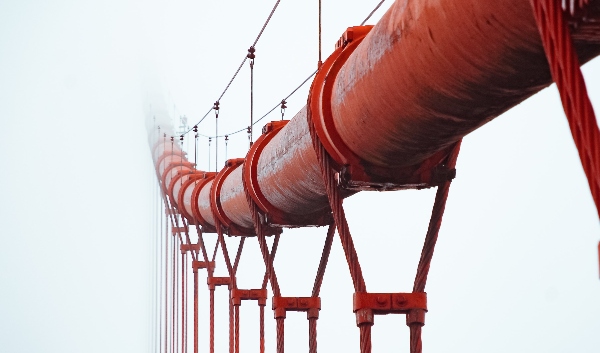
Pipeline Bridge
A pipeline bridge is one of the only bridge examples that doesn’t involve holding up a person or vehicle in any way. Pipelines are used to transport gas or liquids from one location to another.
These bridges need to exist as the pipes can’t travel under certain obstructions, such as rivers and lakes. Some of these pipelines can run for miles, and seem never-ending.
The world’s highest pipeline bridge, the Hegigio Gorge Pipeline Bridge in Papua New Guinea, has a height of 393 metres, and is the sixth highest bridge in recorded history!
Different Types of Bridges: Examples from Around the World
As you can see, bridges come in all shapes and sizes, some tall, some small, with all working together to close the gaps between one space of land and another.
To recap, we’ve covered everything from the beam bridge to the truss bridge, we also included some legitimate examples from around the world – some you were probably aware of already (i.e. the Golden Gate Bridge).
There’s no telling what future bridges might look like. We may need to update this ‘different types of bridges’ post at some point. For now though, let’s marvel at the bridges we have currently.
Interested in bridges and work in the construction industry? At YardLink, we’re a dedicated tool/equipment hire company that works to bridge the gap between you and your next project.
It could be that you’re building a bridge of your own, if so, you might be in need of a mobile crane, or tower lights for maximum visibility at night. Whatever the project, we’re here to help you.
Give us a call today to find out more.
YOU MIGHT ALSO BE INTERESTED IN

